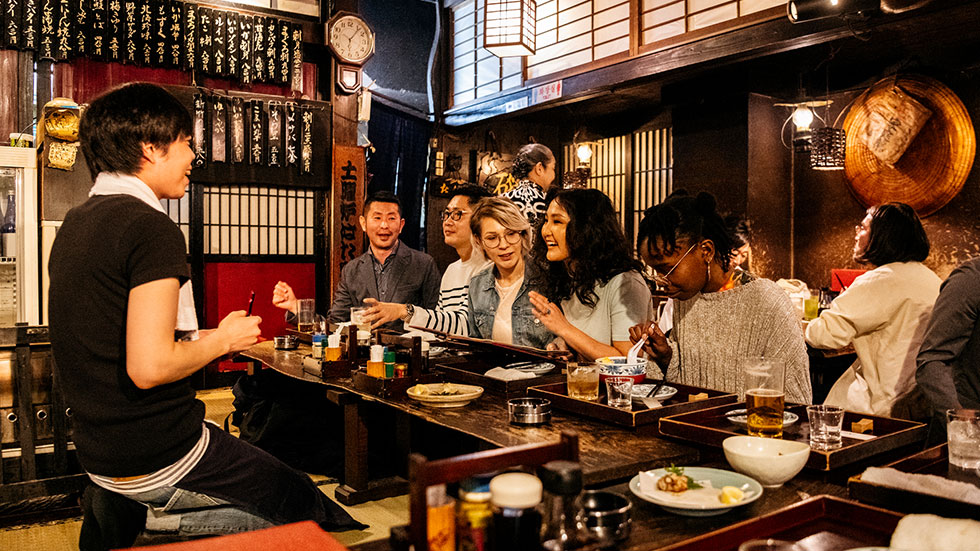Why Immersive Travel Is the Hottest Travel Trend
9 tips and resources for immersive travel


When you travel deeper, you stand to gain a richer experience. This usually involves setting aside travel motivated by Instagram-able selfies and checking off bucket-list items. Instead, it means traveling not as a tourist, but as someone who has a curiosity and willingness to make authentic connections within a local culture while also respecting it.
This style of travel is referred to as immersive travel. Celebrated globetrotter Anthony Bourdain is one of the most respected travel ambassadors who made immersive travel a mainstream trend, with his thoughtful, deep dives into the cuisine and culture of destinations around the world, from the colorful neighborhoods of Argentina to the rural villages of Ethiopia. His writing and television programs certainly influenced me, along with many others aspiring to emulate his journeys.
Perhaps you fall into this category. If so, here are some tips on how to craft your own immersive travel vacation, some of which are based on my own travel experiences around the globe.

Seek out emerging destinations
Consider places that aren’t yet widely known for their package vacations, chain hotels, and commercialized boulevards. For example, instead of Rome, sink into Sicily. Instead of basing yourself in Paris, head to the French Alps town of Annecy. It’s not that you can’t have an immersive travel experience in globally popular travel destinations. When traveling to lesser-known locales, however, you stand a better chance of having the sort of authentic experiences among locals that are harder to uncover in tourist-heavy spots, all the while helping to boost the economies of lesser-known regions.
Have a (meaningful) purpose
Don’t travel just to complete a list of places to see; make it a meaningful experience that will live on, long after you leave the destination. Whether it’s learning a new skill during your “vacation” or volunteering your PTO time with a reputable charitable organization, a specific focus often allows you to better sink into the community—as you’re often learning or working alongside locals. One of my favorite immersive experiences was attending a month-long Thai massage school in Chiang Mai, Thailand. I attended daily classes taught by locals and had my lunch breaks at a nearby market where I got to know the local vendors and their delicacies. I stayed in a local apartment (for $14 a night) and took local transportation to and from the school each day, which occasionally included riding alongside saffron-robed monks.
Stay in a residential area
You won’t really get to know the fabric of a neighborhood or community by staying in a chain hotel. Instead, opt to rent a room, an apartment, or a home in a residential neighborhood of wherever you’re staying. Online accommodation sites such as Airbnb, Vrbo, Homestay, and Couchsurfing make it easy to find hyper-local accommodations. For instance, when I was on a yoga-motivated sabbatical in Mysore, India, I rented an apartment in a neighborhood adjacent to my yoga shala. It allowed me to live among the locals and be a part of their daily rhythms, which included awaking with the early-morning street vendors who sold fruit and vegetables to the families on my block.

Give yourself time to sink into a place
For Americans with limited vacation time, it’s tempting to want to cram as many destinations into a trip as possible. (It also doesn’t help that many packaged tours offer this type of itinerary.) But if it’s an immersive travel experience that you seek, you’d be short-changing the immersion by doing a blitz tour of multiple locations that would likely leave you more exhausted than when you began. Consider planting roots in one place for the duration of your time. This would give you ample time to savor and uncover the nuances of the destination, without the pressure of rushing and the need to “do.”
Give your itinerary some breathing room
It’s hard to take advantage of spontaneous discoveries when your itinerary is tightly scheduled. The solution: Plan to give yourself space, at least a few hours each day where you have zero plans. Consider it a blank canvas to fill as you see fit, based on what you uncover once you've arrived and gotten your bearings. I typically keep a day or two toward the back end of my trips completely unscheduled, so that I have time for opportunities that might arise. I also keep a tiny notebook and pencil in my travel purse, to jot down recommendations that locals share with me—sometimes asking them to write it down for me in their native language—so that I can refer to it later.
Use online travel forums to connect with local expertise
Speaking of local recommendations, seek these out ahead of your trip, too. Leverage online travel forums and online communities specific to where you’re headed, such as those found on Facebook and TripAdvisor. You’ll be able to connect with locals in your destination for their advice. For instance, I was connected with a local woman in Bali through a mutual friend who recently visited the island, and this friendly Balinese local spent an entire day showing me some of her favorite places by motor bike: a great local eatery, a far-out temple, and a hidden waterfall that we climbed together. I would have never had this sort of DIY local experience without her.

Hire local guides
One of the best things that I do when I land in a new destination: hire a local guide to show me the ropes, not just the sites. You can typically coordinate this ahead of time through some simple online research and vetting, but remember to check references and reviews. A guide who lives and works in the destination—and is also used to engaging with foreign travelers—will be able to introduce you to the culture and customs. This is especially important when you find yourself in a community entirely unlike where you live. For example, I hired a local guide for my first four days in Cambodia as a solo traveler. Besides taking me to the well-known and lesser-known temples, he also introduced me to the locals in small villages and told me his personal story about living under (and surviving) the Khmer Rouge Regime. He made my time in Cambodia a richly rewarding, eye-opening experience.
Be discerning when selecting an "immersive" travel tour
Immersive travel isn’t for everyone. The good news is, there are a growing number of thoughtful travel companies that are curating immersive group tours for those who want to go beyond the surface and discover the heart and soul of a destination. The best thing you can do when seeking these opportunities is ask a lot of questions. One of the important questions to ask: How does your company work with locals and give back or contribute to the community? After all, you want to make sure the local community supports it. Some other key things to consider in an organized tour: the group size should be small; the tour should be led by local guides; the planned activities should be authentic to the culture; the itinerary should provide freedom for independent exploration; and the accommodations should be unique and local, as opposed to big chain properties.

Be flexible
Immersive travel often means doing things with an adventurous DIY twist, even if you’re on a guided tour. Do your best to give yourself (and those around you) some grace. Staying flexible and open to opportunities as they arise often leads to cool discoveries—some of which might prove the unanticipated highlights of your trip.
